|
Resetting the Neck on a German bowlback
In the case of German bowls, the strategy for resetting a neck is somewhat different because of the system used. In most German bowls, the neck and heel are not one piece. The neck is usually set into the heel using a wedged join. Hence, where there are problems, it is usually this join that gives not the heel. |
|||
| A common problem with old mandolins, caused by new strings, is the dislocation of the neck. Often the seating of the neck gives way, as here. |
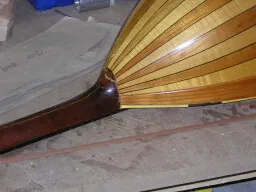
|
In other mandolins, such as this one, not only is the fingerboard warped, making the instrument unplayable, but also the bowl itself is split by the displaced neck. |
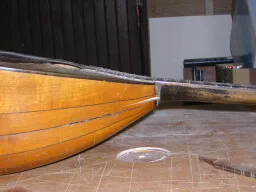
|

|
The neck must first be removed from the seating, often difficult, as the fitting is usually wedge-shaped. Left, much of the neck fitting has been left in the body. | The seating must be cleaned up for re-fitting, and in this case, the foot of the neck will need to be re-built. | |

|
|||
| Here, neck and body have separated quite well, with the worst damage being to the integrity of the bowl's narrow end, with splits in the seams between several of the narrow ribs. The wedge fitting of the neck can be seen clearly here. | A wedged clamping system must be used to re-glue the damaged narrow ends of the bowls, because of the steep slope of the bottom. This provides a sound housing for the neck. |
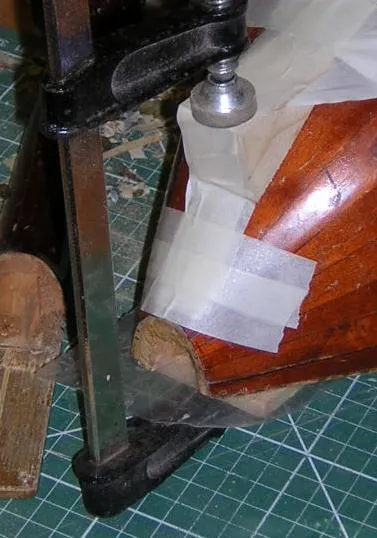
|
|
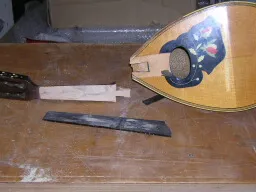
|
|||
| Resetting the neck | |||
|
Because the neck blocks are usually accessible in
German bowls without removing the top, resets are a lot easier.
Small amounts of wood may be shaved off the bottom of the fitting wedge until the neck is in the same plane as the top. Use a straight edge to ensure the neck surface and top are level. Small amounts of scrap material are often needed to pack around the fitting wedge, which are often not well fitted. Tap in before the glue dries. If too much is shaved off, the bottom can be built up again with scrap, the the process recommenced. |
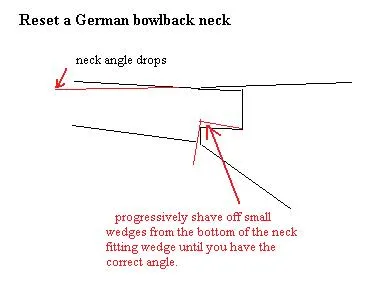
|
||
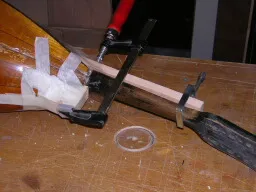
|
Here the neck is clamped. With the top still in place, I used a long caul to ensure the top and neck surface were in the same plane. |
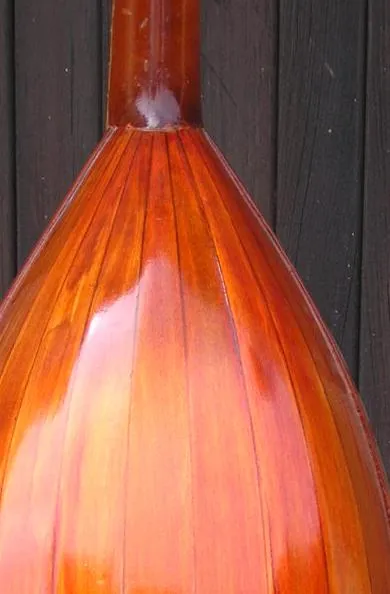
|
Once the reset is done, it should be difficult to see from the outside.
|